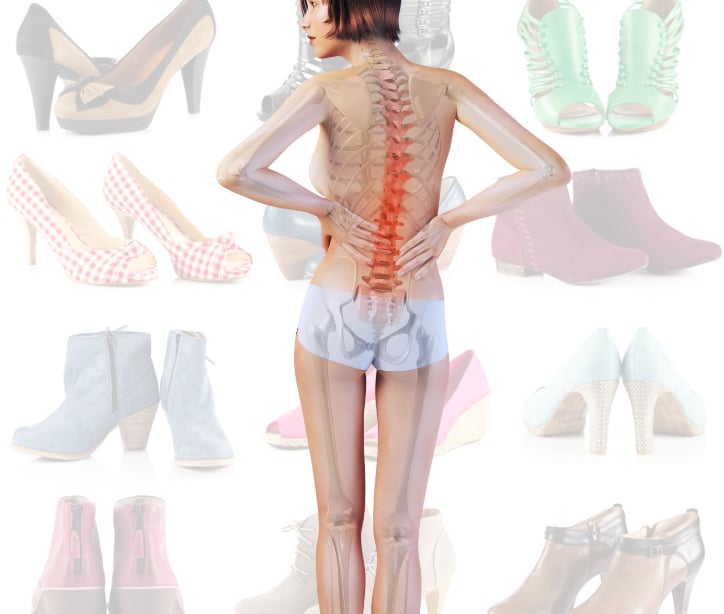Ever wondered why your back hurts after a long day, even when you haven’t been lifting heavy objects? It might be as simple as the shoes you wear. Let’s explore how the right—or wrong—footwear can significantly impact your lower back health.
When you consider factors contributing to lower back pain, footwear might not be the first thing that comes to mind. However, the connection between what you wear on your feet and your back health is more significant than you might think. This article delves into the biomechanical impact of footwear on lower back pain and provides practical advice for selecting shoes that support spine health.
Understanding the Connection
The human spine is designed for balance and support, but it relies heavily on the alignment and function of the feet. When you wear poorly designed shoes, it can disrupt this alignment, leading to unnecessary strain on your lower back. For instance, high heels tilt the pelvis forward, stressing the lower back, while flat shoes might not provide adequate arch support, leading to overpronation and increased spinal pressure.
Biomechanical Impacts of Footwear
Footwear affects your posture and the way you walk—known as your gait. The wrong shoes can alter your gait, impacting how weight and stress are distributed across your body. Properly designed shoes help maintain optimal alignment and balance, reducing the strain on your lower back. Key features of such footwear include:
- Arch Support: Proper arch support in shoes helps maintain the natural curvature of your spine, reducing the risk of back pain.
- Cushioning: Adequate cushioning absorbs impact while walking or running, preventing that force from traveling up your legs to your lower back.
- Fit: Shoes that fit well prevent abnormal movements of the feet, reducing strain on the lower back.
Tips for Choosing the Right Footwear
Here are some tips to help you choose footwear that supports your lower back health:
- Seek Professional Advice: Consider consulting with a podiatrist or a physiotherapist who can recommend the best type of shoes based on your foot type and gait pattern.
- Opt for Low Heels: Choose shoes with a heel height of less than 2 inches to maintain proper pelvic alignment.
- Test for Support and Comfort: Always try on shoes later in the day when your feet are at their largest. Walk around in the shoes to ensure they provide comfort and support.
- Replace Regularly: Footwear loses its cushioning and support over time. Replace your shoes every 6 to 12 months, depending on usage.
Conclusion
While it may be surprising, your choice of footwear plays a pivotal role in maintaining lower back health. By choosing the right shoes, you can alleviate and even prevent back pain, leading to a more active and enjoyable life. Remember, the best shoes for your back are those that fit well, offer good support, and make you feel comfortable at every step.
Embrace better foot and spine health today by reassessing your footwear choices!

